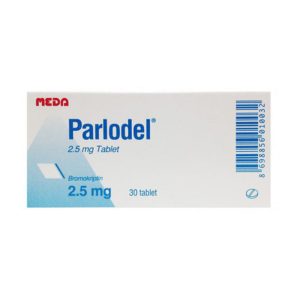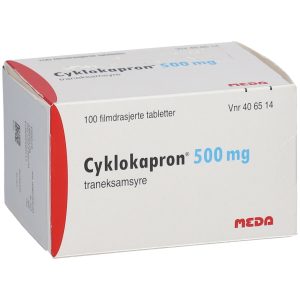Description
At the occurrence of thromboembolic complications or at the suspicion of their occurrence, the therapy with estrogen should be immediately stopped. The patients with the raised risk of thromboembolic complications should be under careful supervision.
The two low dosed forms of the preparation Premarin (containing 0,3 or 0,45 mg of conjugated estrogens) produced by the company “Wait” intended for replacement hormonal therapy, are approved by Food and Drug Administration (FDA) for preventive maintenance of a postmenopausal bony rarefication.
For today Premarin is accessible in various doses for treatment of such symptoms of a postmenopausal period, as inflows, dryness, itch, and burning in a vagina. Approval of the new forms of release of preparation is based on the data of a prospective clinical trial, the results of which testify that in these dozes the preparation is as much so effective, as in the standard (0,625 mg), for preventive maintenance of a bony rarefication at women in the postmenopausal period.
Premarin is a preparation of estrogen. It contains a mix of horse estrogens of a natural origin (conjugated estrogens), which are similar to endogenous estrogen. The preparation facilitates and stops displays of a climacteric syndrome: vasomotor frustration, emotional (irritability, alarm), and urogenital symptoms (atrophic vaginitis and atrophic urethritis) associated with them.
It prevents the development of a postmenopausal bony rarefication, suppressing resorption of bones, having an effect, antagonistic to the effect of a parathyroid hormone, but does not stimulate the formation of a bone fabric.
Premarin is intended for the treatment of the conditions arising at women during the period of menopause and postmenopause (vasomotor frustration (rushes of blood, night hyperhidrosis, infringements of sleep, irritability, alarm); atrophic vaginitis, trophic urethritis; a postmenopausal bony rarefication; cardiovascular diseases; hypogonadism at women; primary dysfunction of ovaries.
Indications
Replaceable therapy in peri – and postmenopause, hypofunction of ovaries (primary and secondary amenorrhea, oligomenorrhea, dysmenorrhea), sexual infantility, hypogonadism, secondary estrogen insufficiency (including after ovariectomy in the occasion of nonmalignant diseases or after X-ray castration), carcinoma of a mammary gland (some inoperable forms), androgen-dependent carcinoma of a prostate gland.
Collateral action
- From sexual system: occurrence of bloody discharges (of various intensity), change of intensity of menstruation, amenorrhea.
- From the digestive system: nausea, vomiting, meteorism, pains in epigastric, cholestatic jaundice, pancreatitis.
- From the endocrine system: increase or reduction of weight of a body, increase in the sizes and morbidity of mammary glands, the occurrence of discharges from them, change of libido.
- From CNS: a headache, dizziness, a migraine, chorea.
- From the organ of sight: strengthening of curvature of the cornea.
- Dermatological reactions: melanosis (may remain after the termination of reception of a preparation), chloasma, alopecia, a rash.
- From the cardiovascular system: thromboembolism of veins, thromboembolism of lungs.
- Other: hypostases, aggravation of porphyria.Contra-indications
- The proved cancer of a mammary gland or suspicion on it;
- Proved estrogen-dependent new growths or suspicion on them;
- Bleedings from genitals of unstated genesis;
- Acute thrombophlebitis and thromboembolism (the instruction on these conditions in the anamnesis, connected with the previous use of estrogen);
- The proved or prospective pregnancy;
- The raised sensitivity to the components of the preparation.
Special instructions:
During treatment, it is necessary to remember the risk of development of cancer of endometrium at women in postmenopause. Before the beginning of the reception, it is necessary to conduct a careful medical and gynecologic inspection, including tests of mammary glands and performance of vaginal smear of Papanikolau for detection of malignant cells.
Similar researches are necessary to be conducted every 6 months of treatment. To the patients with an intact uterus with the purpose of reduction of risk of occurrence of hyperplasia or cancer of the endometrium, it is prescribed in a combination with gestagens from 10th to 14th day of a menstrual cycle. If the therapy with gestagens is not conducted, the gynecologic inspection with an obligatory biopsy of the endometrium is necessary.
Data on the risk of development of a cancer of a mammary gland at women in postmenopause on a background of treatment by estrogen are discussed. There is an opinion, that application of high doses or long-term therapy within more than 10 years increases the risk of developing cancer of a mammary gland.
However now the majority of researchers consider this fact to be not proved. The women taking up the replacement therapy by estrogen, should pass a regular inspection of mammary glands, and also should be trained to skills of their independent inspection. On the background of therapy, the increase of available leiomyoma of a uterus is possible.
There are the messages on the increase of risk of development of diseases of a gall-bladder at the women accepting estrogen in postmenopause. Estrogen accelerates the process of epiphany ossification, therefore should not be applied at children and teenagers during intensive growth. Application of estrogen during pregnancy raises the risk of the development of congenital defects of the reproductive system at a fetus. Treatment should be stopped for 1 month before carrying out scheduled surgical intervention, during long immobilization.
At the occurrence of thromboembolic complications or at the suspicion of their occurrence, the therapy with estrogen should be immediately stopped. The patients with the raised risk of thromboembolic complications should be under careful supervision.
In the 1942 FDA (Food and Drug Administration USA) has for the first time allowed applying a hormone of estrogen in the treatment of women for the extremely unpleasant and dangerous displays of menopause: painful “inflow”, night “downpour” hidrosis, weakness, and the main thing – for preventive maintenance of a bony rarefication, i.e. the “under pressure” of a bone fabric leading to fractures of bones. It is enough to mention the fracture of the femoral neck, which was until recently literally a scourge of elderly women, and now is still, unfortunately, rather “actual”.
Due to replacement hormonal therapy, millions of women have obtained an opportunity to extend their “female” life for some decades, to keep vivacity and operational capability, to avoid many diseases of advanced age.



Reviews
There are no reviews yet.